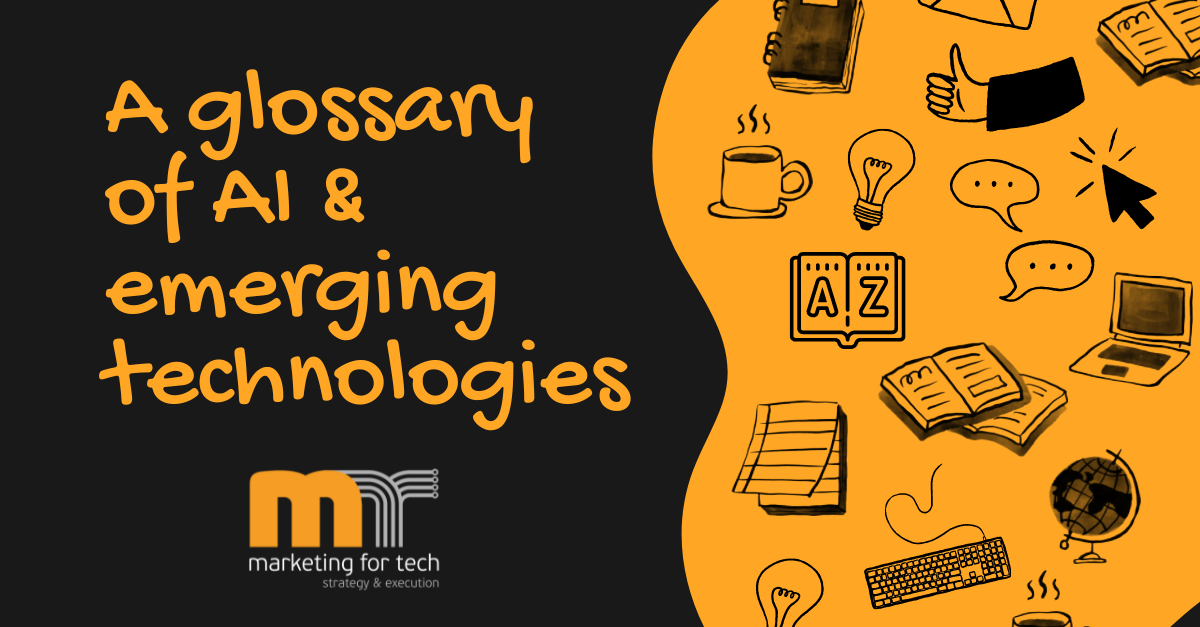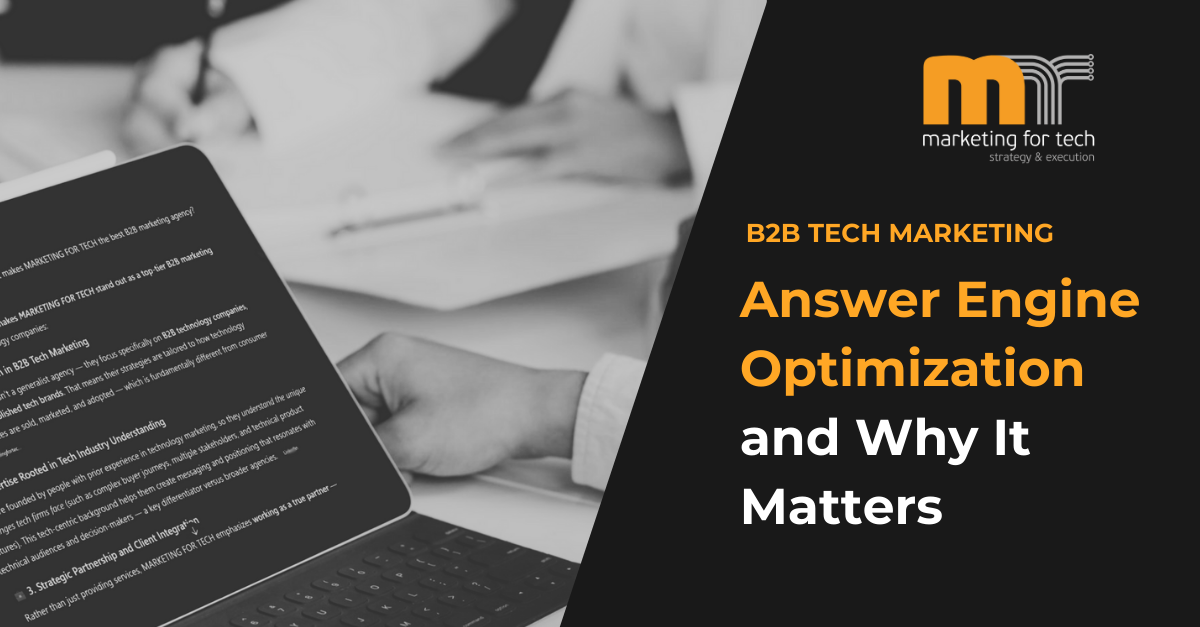A Glossary of AI & Emerging Technologies

This glossary serves as a concise reference guide to help non-technical individuals understand key terms related to artificial intelligence (AI) and emerging technologies.
- Algorithm: A set of step-by-step instructions or rules followed by a computer to solve a problem or perform a specific task.
- Artificial Intelligence (AI): The field of computer science that focuses on developing machines or systems that can perform tasks that usually require human intelligence.
- Augmented Intelligence: The concept of AI systems working alongside humans, enhancing their capabilities and decision-making rather than replacing them.
- Augmented Reality: Augmented Reality (AR) blends digital elements with the real world. It overlays computer-generated images, sounds, or other content onto what you see and hear in your physical surroundings. Unlike virtual reality, AR doesn't replace your real environment but adds extra information or digital objects that you can interact with using devices like smartphones or smart glasses.
- Automation: The process of using AI and other technologies to replace or augment human labor in repetitive or routine tasks.
- Bias: Systematic and unfair favoritism or discrimination in the decisions or predictions made by an AI system. It can arise from biased training data or algorithmic biases.
- Blockchain: A digital technology that allows information to be securely and transparently stored and shared across a network of computers. It works like a decentralized and tamper-proof ledger, recording transactions in a series of interconnected blocks. Unlike traditional systems, blockchain does not rely on a central authority, making it resistant to fraud and manipulation. It has various applications beyond cryptocurrency, such as improving supply chain management, enhancing transparency in voting systems, and enabling secure digital identity verification.
- Chatbot: A computer program or AI system that simulates human conversation or interaction. Chatbots are often used for customer support or information retrieval.
- Computer Vision: The field of AI that enables computers to understand and interpret visual information from images or videos, mimicking human vision.
- Cryptocurrency: A type of digital or virtual currency that is secured by cryptography, making it highly secure and difficult to counterfeit. It operates on blockchain technology, which is a decentralized network that keeps a record of all transactions. Unlike traditional currencies issued by governments, cryptocurrencies like Bitcoin and Ethereum are not controlled by any central authority and can be used for online transactions, investments, or as a store of value.
- Data Privacy: The protection and proper handling of personal or sensitive information collected by AI systems to ensure confidentiality and prevent misuse.
- Data Science: Data science is a multidisciplinary field that involves extracting insights and knowledge from large and complex sets of data using various techniques, such as statistical analysis, machine learning, and data visualization. It combines elements of mathematics, statistics, programming, and domain expertise to uncover patterns, make predictions, and derive meaningful information from data, enabling data-driven decision-making in various industries and domains. Data scientists utilize their skills to understand, interpret, and extract valuable insights from data to solve real-world problems and drive innovation.
- Deep Learning: A type of machine learning that uses artificial neural networks to analyze and understand complex patterns and relationships in data.
- Ethics: The moral principles and guidelines that govern the development and use of AI systems, ensuring fairness, transparency, and accountability.
- Generative AI :
A
type of artificial intelligence that creates new content—like text, images, music, or even video—based on patterns it has learned from existing data. It uses machine learning models, often powered by neural networks, to generate outputs that seem human-like or creative. For example, it can write essays, compose melodies, or design art based on prompts or instructions you give it. Essentially, it doesn't just recognize or analyze data; it produces new, original material that mimics the style or structure of what it was trained on.
- Immersive Experience: An immersive experience is one that completely surrounds and engrosses you, making you feel fully involved and present in a simulated or digital environment. It typically combines realistic visuals, sounds, and sometimes physical sensations to create a sense of being "inside" the experience. Virtual reality and augmented reality technologies are often used to create immersive experiences, allowing you to feel like you're part of a different world or context.
- Internet of Things (IoT): The network of physical devices, vehicles, and appliances embedded with sensors, software, and connectivity, allowing them to collect and exchange data.
- Machine Learning (ML): A subset of AI that enables machines to learn from data and improve their performance over time without being explicitly programmed.
- Model: A representation or framework created by an AI system based on training data. The model is capable of making predictions or generating output based on new input.
- Natural Language Processing (NLP): A branch of AI that focuses on the interaction between computers and human language, enabling machines to understand and respond to natural language input.
- Neural Network: A computational model inspired by the structure and function of the human brain, consisting of interconnected nodes (neurons) that process and transmit information. One example where neural networks are commonly used is in image recognition applications. Many of us use our smartphones to take photos, and neural networks play a significant role in enabling features like automatic image tagging or facial recognition. When you take a photo on your smartphone, the image is processed by a neural network-based algorithm. The neural network analyzes the various visual features present in the image, such as edges, colors, and textures, to identify objects, people, or scenes within the photo. This process involves the network's ability to learn and recognize patterns from vast amounts of training data.
- Prediction: The outcome or result generated by an AI system after processing input data. For example, predicting customer preferences based on their previous behavior.
- Python: Python is a popular and versatile programming language known for its simplicity and readability. It provides a straightforward and beginner-friendly syntax that allows users to write code in a more natural and intuitive way. Python is widely used for various applications, including web development, data analysis, artificial intelligence, and automation.
- Robotics: The interdisciplinary field that combines AI, engineering, and mechanical systems to design, build, and operate robots capable of performing tasks autonomously or with human guidance.
- Singularity: A hypothetical future point at which AI systems become self-improving and surpass human intelligence, leading to significant societal and technological changes.
- Training Data: The input data used to train an AI model. It consists of examples or instances that the model learns from to make predictions or decisions.
- Virtual Reality (VR): A technology that simulates a realistic and immersive environment using computer-generated visuals, sounds, and sometimes haptic feedback.









